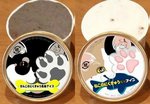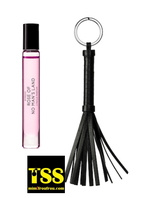Balsam Fir as a More Economic Source of Synthetic Ambergris {Fragrance News}
 A discovery made by scientists at the University of British Columbia will allow for a more stable and cheaper sourcing of synthetic ambergris extracted from Balsam Fir (Abies balsamea). While mainstream news sources point to the interest for the perfume industry to have found a substitute for real ambegris, a rare by-product of the sperm whale which needs to be sea seasoned to yield its full complex aromatic profile, in reality the substance is little used in contemporary perfumery, save for a few very small independent houses or production batches...
A discovery made by scientists at the University of British Columbia will allow for a more stable and cheaper sourcing of synthetic ambergris extracted from Balsam Fir (Abies balsamea). While mainstream news sources point to the interest for the perfume industry to have found a substitute for real ambegris, a rare by-product of the sperm whale which needs to be sea seasoned to yield its full complex aromatic profile, in reality the substance is little used in contemporary perfumery, save for a few very small independent houses or production batches...
Small-scale production and independence from blanket industry regulations allow for the use of a traditional animalic ingredient which is costly and unreliable in its provenance. Since 2005, natural ambergris has been officially reinstated but must originate from the material having washed ashore.
Historically, the ingredient has been used as a fixative to anchor more volatile components in a perfume as well as to flavor food. A synthetic substitute derived from the molecules sclareol and cis-abienol found in Clary Sage (Salvia sclarea), Ambrox or Amrbroxan, has taken the relay. But quantities of sclareol within the plant are limited and moreover vulnerable to rain.
The new research would allow for the large scale exploitation of the molecule cis-abienol, this time derived from a gene of the balsam fir and yeast culture.
"The discovery and related technology is currently being commercialized through UBC's University-Industry Liaison Office. The research was supported by Genome Canada, Genome British Columbia, and Genome Alberta through the PhytoMetaSyn Project, and through grants from the Natural Sciences and Engineering Research Council of Canada."
Reference synthetic or fantasy ambergris perfumes nowadays are Eau des Merveilles by Hermès and Ambre Gris by Balmain.
Sources: FashionMag.fr; ScienceDaily ; picture: Wikia









